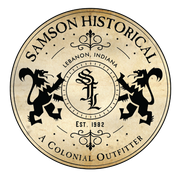
Was Rioja viewed as a good wine in England and the United States between 1900 and 1940?
It is undetermined if Rioja was viewed as a good wine in England and the United States between 1900 and 1940

Respuesta
There is some evidence suggesting Rioja wines may have been viewed favorably in England and the United States between 1900 and 1940. The book "El vino de Rioja en sus etiquetas" highlights the development of Rioja's brand awareness over time, with labels reflecting the events and trends of each period. The aesthetic of label designs from the late 19th and early 20th centuries are noted to have stood the test of time , implying a sustained interest in Rioja. Moreover, the use of English on some Rioja labels from 1922 intended for export to La Habana suggests an attempt to appeal to English-speaking markets, which could include England and the United States. The reference to "Spanish Burgundy" on a 1953 red wine label destined for export to Paramount Liquor Co. in Missouri indicates that Rioja wines were being marketed in the United States and drawing a parallel to the well-regarded Burgundy wines. The label also displays medals from various exhibitions, which were akin to Parker scores, suggesting that Rioja wines were recognized and awarded in international events which may have promoted the wine in England and the United States between 1900 and 1940 . The reference to Murrieta not referring to claret or the Medoc method and instead using "Vinos de Rioja" could reflect Luciano's confidence in the region's characteristics without resorting to French terms for the wines, suggesting it had already developed a good reputation.
However, there is also evidence suggesting challenges and complexities in Rioja's reception in England and the United States during this period. The book mentions that many Riojas of the late 19th and early 20th centuries were inspired by French styles, mainly from Bordeaux but also from Burgundy . The labels referenced "cepa Sauternes", "cepa Médoc", "cepa Borgoña", "cepa Chablis", highlighting an effort to align Rioja with established French wines to appeal to consumers . Furthermore, the term "claret" was the most common term on Rioja labels until well into the 20th century and it referred to red Bordeaux wines and it was used in both English and Spanish to distinguish between domestic and export markets. This suggests Rioja may have initially relied on association with better-known French wines to gain recognition. The concern over authenticity and health, as evidenced by labels guaranteeing "absolute purity" and preventing fraud , indicates potential issues with wine adulteration that could have affected Rioja's reputation. The existence of "vino corriente" , or ordinary wine, denoting a lower-priced wine for frequent consumption, suggests a range in quality and price points for Rioja, possibly impacting perceptions of its overall quality. The text also describes a period that included World War I, the Spanish Civil War and World War II which created trying times for the Rioja industry and impacted exports. The text also describes the Spanish Civil War (1936-1939) plunging Spain into a deep economic and social crisis that would also be felt in the wine industry as well as decreeing substitution of wheat for vine crops to fight famine.
Based on the available evidence, it's difficult to definitively conclude whether Rioja was broadly viewed as a "good wine" in England and the United States between 1900 and 1940. While there are indications of efforts to market Rioja in these countries, references to French wine styles on labels, and concerns about authenticity suggest that Rioja's reputation may have been intertwined with or overshadowed by that of French wines. The historical context, including wars and economic hardships, also likely impacted the production and export of Rioja during this period. Therefore, the evidence is inconclusive, and it cannot be determined if Rioja was viewed as a good wine in England and the United States between 1900 and 1940.
1
1
1
1
1
1
1
1
1
1
1
2
3



